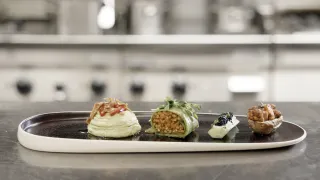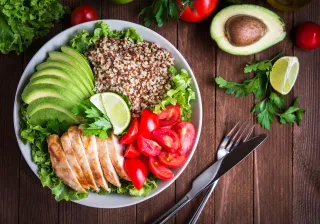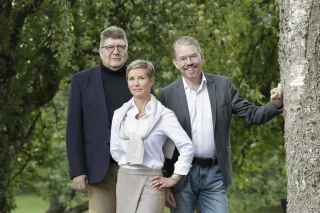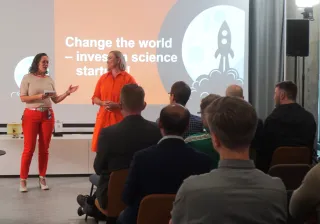What can we do to help the food system and mitigate climate change? This central question is at the heart of the two-year Future Food Court project of the VTT iBEX innovation programme. During the first year, we have outlined what a future sustainable food system could look like. This year, we will also address the challenges of transition, as scarcity and abundance increasingly co-exist in our food system.
The sustainability transition is expected to reintroduce scarcity into our daily lives. Scarcity is a term borrowed from economics and can conjure up images of voluntary misery, impending deprivation and a return to the mythical world of ration cards in the 1940s and 50s. The word may also evoke nostalgia and the idea of returning to a simpler time.
According to Matleena Frisk, Postdoctoral Researcher at the Centre for Consumer Society Research at the University of Helsinki. however, it is no longer possible to return to the level of consumption of days gone by. In the past, we Finns were plagued by food shortages, a narrow diet, and poor cooking hygiene. Today's ravenous consumer of energy – home technology – has been instrumental in making everyday life easier. In many ways, our everyday food consumption has been both plentiful and good in recent years compared to the past.
Applied research that develops technological innovations does not usually look in the rear-view mirror. In our two-year VTT iBEX project project, we have so far outlined the future of a more sustainable food system as a clear continuation of the current situation. Our vision for the future is for us to be able to buy what we want, when we want and where we want, but still eat healthily.
The shopping centre of the future
Last November, we presented food and restaurant experiences of the future to a group of consumers and industry players. To design a workshop event, a restaurant meal envisioned for 2030, we used Garduño Garcia’s and Gaziulosoy's experiential method as well as a framework for shaping the future by Valkokari et al. The latter highlights current trends that can replace traditions and thus support the continuity of everyday life.
With the help of AI and artists, we imagined a future shopping centre to make our idea concrete for the workshop participants. The production functions of new food technologies were featured on the basement floor, and the familiar restaurants and other commercial and urban community activities were on the mezzanine floors. In addition to solar panels producing energy, we placed small-scale green roofs and beehives producing honey on the roof.
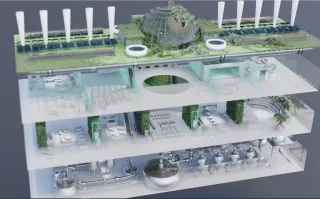
Crises force you to act quickly and focus on what matters most
With the EU's ambitious goal of a carbon-neutral society by 2050, the themes of scarcity and abandonment cannot be avoided. The demand for carbon neutrality could lead to the opposite of innovation, i.e., exnovation. Exnovation is a long-term process during which we may abandon some of our current practices and technologies. Giving up the past often happens as a result of different crises.
Several scenarios published over the last few years, such as those by Sitra, FAO, BCG and Nature Food, envision many crises beset the path to a more sustainable food system. Crises are seen on the one hand as possible trigger points for certain developments, and on the other hand as the realisation of rare but possible risks, such as the COVID-19 pandemic.
We are carrying out the sustainability transition on top of past innovations, adapting to current practices and structures. The paradox of putting the sustainability revolution into practice is like balancing on a knife-edge: while we hope that things change for the better, we fear they change too much or for the worse. The second year of our project starts by jostling our brains forward from a perspective where society is not an empty canvas for new innovations, but also not business as usual. Therefore, in our project, we look at the food system in a crisis.
From rapid and coordinated experimentation to solutions
Crises can be a kind of test of the system: they force you to act quickly and focus on what is essential for survival. Crises test the resilience of societies in a way that reveals their capacity to adapt and change. At the same time, they test which elements of society are ultimately the most important and enduring.
In times of crisis, we need to experiment quickly and think of rapid solutions, since the resources available are not unlimited. For example, it is possible that energy use, even in Finland, will one day be regulated by alternating power outages, and extreme weather events may slow down supply chains. By thinking about these questions in advance, we can develop innovative technologies to adapt to this world and consider what is most essential in our current food system. Are there things we can do the best to help mitigate climate change?

